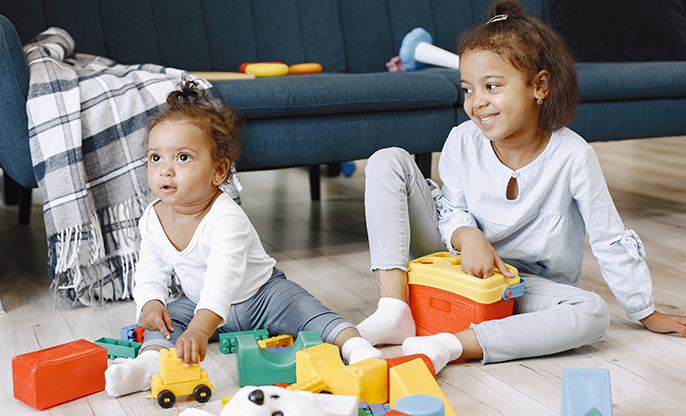
Overstimulation: babies and children
No matter how much you love the hustle and bustle of life, we all need balance. That's especially true for children and babies, whose senses can be easily overwhelmed by too much input due to their developing nervous systems.
This is called sensory overstimulation, which can happen when children are exposed to more stimuli than they can handle or are used to. Even seemingly enjoyable things like a trip to the park or a lively meal with friends can become overwhelming for little ones if things get too much.
Signs of Sensory Overload and How to Recognise Them
When determining whether your little one is feeling overstimulated, it can sometimes be difficult to spot the signs. After all, infants and children don't have the words to tell you when something is too much for them—but their bodies will show you in other ways. When a child is exposed to too much stimulation for too long, it can be not easy to cope with situations that most wouldn't find overwhelming.
Signs of overstimulation in babies and children can include crankiness, jerky movements, crying, covering their eyes or ears, and even becoming quiet and withdrawn from their environment. If this is something that you're seeing in your child often or your child is showing multiple signs at once, they're likely experiencing sensory overload.
Every child is unique. Depending on the child's temperament, different environments will produce different reactions in their behavior. Additionally, a stimulus that may be too much for one child might not cause any trouble for the other.
Coping Strategies
Babies and Toddlers
Remove them from the situation
Dim the lights
Reduce noise level
Change their diaper
Rock or sing to them
Wrap them securely in swaddling clothes.
Pre-Schoolers
Read to them
Play with toys
Allow free play and exploration.
Introduce only one activity at a time.
School-age
Respect their personality
Schedule quiet time
Use sound-canceling technology for larger events or trips
Let them move around (in a controlled setting)
Creating a Balanced Environment
When it comes to finding a balance between overstimulation and relative calm, it's important to get creative. Introducing mellow stimuli, like quiet music or toys with a calmer color scheme, can help balance out activity time and quiet time — those kinds of items can be just as fun and stimulating.
Moreover, removing children from overstimulating situations and helping them calm down is the first step in dealing with overstimulation. It's also good to devise strategies for calming down before triggering situations arise. For example, for infants who are too overwhelmed by a loud room of people, calming breathing exercises or cuddling can help.
But don't forget that exposing children to new and challenging information can help support healthy development — it's just about striking the right balance between stimulation and restful periods. You can keep your child engaged by introducing challenges at the right moments without overloading their senses.







